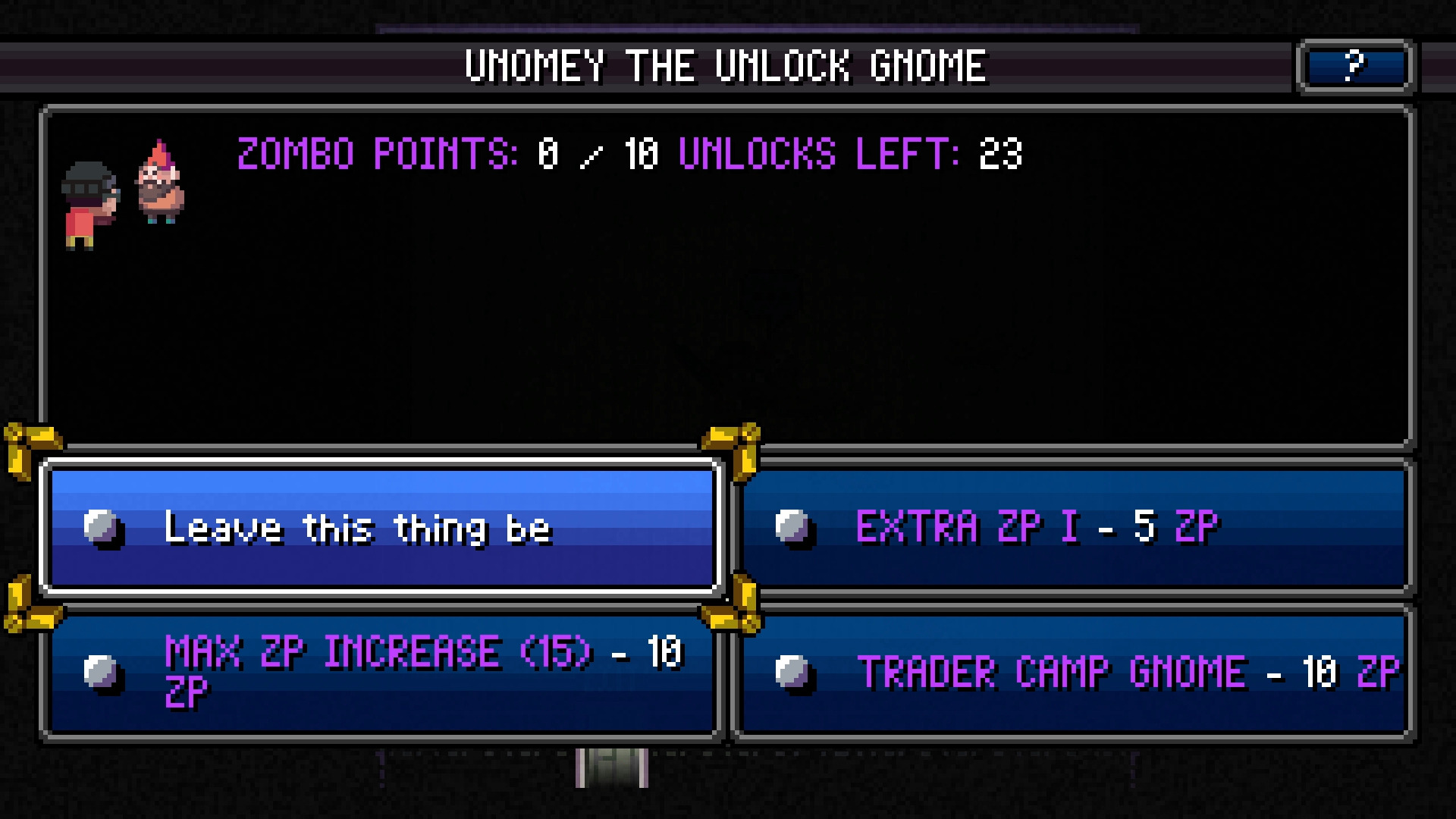
Between runs, players can spend Zombo Points (awarded after certain events or found within event stages) on various permanent unlocks. These include leveling up existing perks for stat bonuses, unlocking new perks and traits, and more. It’s good that Death Road has a proper permanent unlocking system. But after a certain point, I had leveled the perks I wanted and the remaining unlocks didn’t seem all that helpful. I’ve also experienced a bug on Xbox One in which my unlocks don’t display properly until I’ve completed my first run of the session.
Drop-in, drop-out 2-player local co-op does, thankfully, make this ultra-tough journey slightly easier. A human partner can be more effective in combat, enabling the party to strategize rather than blindly following the lead player. You might find yourself surrounded by the undead, only for your partner to rush in with guns blazing and save the day. That’s important, because teammates can’t revive each other. If only one party member remains, the other player has to sit out until a new character joins the party.
Playing as a co-op partner is somewhat less satisfying than as the primary player, unfortunately. The second player can’t use their own profile or earn Achievements – they’ll simply tag along in the primary player’s game, with access to the primary player’s custom characters and random characters who join the party. It’s odd that the game is limited to two players when the party can consist of up to four characters, but supposedly 4-player support might be added in the future.
Switching characters is not intuitive whether you’re playing solo or in co-op. Solo, you have to pause and navigate slightly clunky menus to switch between party members. In co-op, the second player can switch between unused party members whenever the team enters a new area or building. You never have the option to just switch with the bumper buttons, etc., which is unintuitive and needlessly slows the game’s pace down at times.

The second player’s experience is also needlessly inferior to the primary player’s. Player 2 can’t go through doors – only the first player can. So the first player has to lead the way, and the second player has to follow. Player 2 can’t talk to NPCs encountered during event stages or shops, either. It can already be hard enough to talk a co-op buddy into playing when they can’t use their own profile, so these arbitrary restrictions on the second player’s actions don’t do the game any favors.
Death Road to Canada is a charming game that really had me hooked at first. The blend of Oregon Trail- style travel, action, humorous writing, and charming pixel art are very enticing. The music by Joey Grady is far less catchy and doesn’t fit the mood of the game (and you’ll also want to turn up the sound levels to even hear it, at least on Xbox). The element that hurts long-term appeal is the difficulty.
It’s not that I dislike hard games – Dark Souls III and Crypt of the Necrodancer are personal favorites. But here, the difficulty is truly unfair at times. You’ll have a happy, healthy party and plenty of supplies one moment, only to run into a random event that injures everyone or steals all your supplies the next. When I lose, I often feel like it’s because the game decided I should lose rather than because I made a mistake. Failing so often, the beginning of the game starts to become repetitive and hopelessness sets in. Still, the early hours of the game are fun enough to warrant a purchase – especially if you have a co-op partner to ride shotgun.
Verdict
Co-Op Score
Overall
The Co-Op Experience: 4 player local same screen co-op where you control up to 4 characters throughout the campaign and other game modes
Co-Optimus game reviews focus on the cooperative experience of a game, our final score graphic represents this experience along with an average score for the game overall. For an explanation of our scores please check our Review Score Explanation Guide.